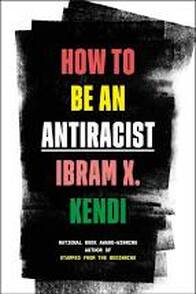 Chapter 9 - Color Colorism: A powerful collection of racist policies that lead to inequities between Light people and Dark people, supported by racist ideas about Light and Dark people. Color Antiracism: A powerful collection of antiracist policies that lead to equity between Light people and Dark people, supported by antiracist ideas about Light and Dark people. To be antiracist is to focus on color lines as much as racial lines. pg. 110 To be an antiracist is not to reverse the beauty standard. To be antiracist is to eliminate any beauty standard based on skin and eye color, hair texture, facial and bodily features shared by groups. - pg. 114 Self-Examination. Are my interactions different depending on the lightness or darkness of skin color? What is my body language doing that gives off my inner thinking? Being an antiracist is not a show that I am acting. These questions are not to conceal but to call out. Knowing and believing no race or color is superior needs to be demonstrated in body language and within interactions. I need to be real and reevaluate myself if assumptions are made before I cause harm.
0 Comments
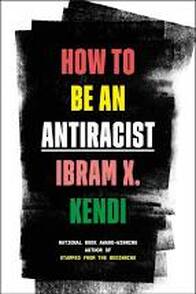 Chapter 8 - Behavior Behavioral Racist: One who is making individuals responsible for the perceived behavior of racial groups and making racial groups responsible for the behavior of individuals. Behavioral Antiracist: One who is making racial group behavior fictional and individual behavior real. "All we have are stories of individual behavior. But individual stories are only proof of the behavior of individuals. Just as race doesn't exist biologically, race doesn't exist behaviorally." - Pg. 95 "Both positions led Americans toward behavioral racism: Black behavior demoralized by freedom --or freed Black behavior demoralized by slavery." - Pg. 97 "What if we measured intelligence by how knowledgeable individuals are about their own environment? What if we measured intellect by an individual's desire to know? What if we realized the best way to ensure an effective educational system is not by standardizing our curricula and tests but by standardizing the opportunities available to all students?" - Pg. 103 It's not an achievement gap but an opportunity gap. "As long as the mind thinks there is something behaviorally wrong with a racial group, the mind can never be antiracist." Pg. 104 Self-Examination. Being an antiracist means I look at each individual as an individual and cannot put their behavior onto their race. I really like what Kendi says on page 105, "Behavior is something humans do, not races do." Every person makes their own decisions and just like my decisions are not put on to all white people, no other individual should have this take place. 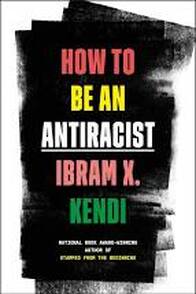 Chapter 7 - Culture Cultural Racist: One who is creating cultural standard and imposing cultural hierarchy among racial groups. Cultural Antiracist: One who is rejecting cultural standards and equalizing cultural differences among racial groups. "The idea that Black languages outside Africa are broken is as culturally racist as the idea that languages inside Europe are fixed." pg. 83 "Whoever creates the cultural standard usually puts themself at the top of the hierarchy." Pg. 91 To be antiracist is to see all cultures in all their differences as on the same level, as equals. 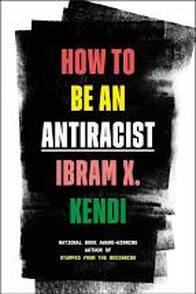 Chapter 6 - Body Bodily Racist: One who is perceiving certain racialized bodies as more animal-like and violent than others. Bodily Antiracist: One who is humanizing, deracializing, and individualizing nonviolent and violent behavior. 1994 Violent Crime Control and Law Enforcement Act - Bill Clinton said, "Never again should Washington put politics and party above law and order." Violent crime has more of a correlation with unemployment and lack of opportunity than with race. To generalize and put actions of a few onto a whole group creates unwarranted fear. Self-Examination. Do I put actions of a few in the classroom onto a whole group? How do I push back against others who do do this? I see every student as an individual who has a story and experiences the same human desires that I do, and my kids do. Building relationships matters. Understanding stories of individuals matter when pushing for antiracist policies. 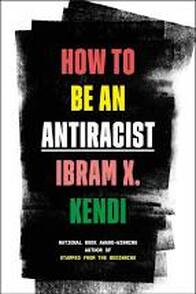 Chapter 5 - Ethnicity Ethnic Racism: A powerful collection of racist policies that lead to inequity between racialized ethnic groups and are substantiated by racist ideas about racialized ethnic groups. Ethnic Antiracism: A powerful collection of antiracist policies that lead to equity between racialized ethnic groups and are substantiated by antiracist ideas about racialized ethnic groups. "Origins of ethnic racism can be found in the slave trade's supply-and-demand market for human products." pg. 58 - Kendi 90s immigrants of color population grew because of the combined effects of the Immigration and Nationality Act of 1965, the Refugee Act of 1980, and the Immigration Act of 1990. - encouraged family reunification, immigration from conflict areas and a diversity visa program that spiked immigration from countries outside Europe - designed to undo a previous generation of laws that limited non-White immigration - 1882 Chinese Restriction Act - 1917 "Asiatic Barred Zone" - 1921 Emergency Quota Act - 1924 Immigration Act When Calvin Coolidge signed the 1924 law, "America must be kept American." - pg. 61 To be antiracist is to view national and transnational ethnic groups as equal in all their differences. "With ethnic racism, no one wins, except the racist power at the top." pg. 67 Self-Awareness. As a student of history, what history do I know and understand? As I continue to read, I find that what I know is white history. And not working class white, but upper class white history that leaves out the movements, the laws/policies, the ideas that reveal where the real power lies. Because of this I grew up thinking that the government was doing what was best. I grew up not questioning the systems that I was receiving the benefits of my privilege from. So much of what I benefit from was designed to keep others in a hierarchy that I was unknowingly benefiting from. No longer. 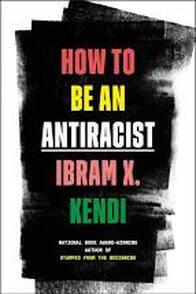 Chapter 4 - Biology Biological Racist: One who is expressing the idea that the races are meaningfully different in their biology and that these differences create a hierarchy of value Biological Antiracist: One who is expressing the idea that the races are meaningfully the same in their biology and there are no genetic racial differences. Microaggressions, coined by Chester Pierce in 1970, and later defined by Derald Wing Sue as, "brief, everyday exchanges that send denigrating messages to certain individuals because of their group membership." Microaggression isn't an accurate term for actions that promote distress, anger, worry, depression, anxiety, pain, fatigue and suicide. Racist abuse would be the correct term. Racism will not miraculously go away. If we stop using racial categories -- leads to not being able to identify racial inequity. Cannot identify racial inequity -- will not be able to identify racist policies. Cannot identify racist policies -- cannot challenge racist policies. Cannot challenge racist policies -- a world of inequity none of us can see, or resist. "To be antiracist is to recognize there is no such thing as White blood or Black disease or natural Latinx athleticism." pg. 54 - Kendi Self-Examination. Do I call on certain students more than others? In my interactions with students, do I make assumptions or assume guilt/innocence because of race? These questions are mine and what I need to be reflecting on regularly. There is no biological difference between our collective humanity. Skin color is meaningful and I cannot ignore the impact it has on our daily lives. Experiences in the classroom, the mall, walking down the street are all impacted by skin color and with being white I cannot downplay or ignore this because of my whiteness. I cannot ignore reality and instead address it as an antiracist. 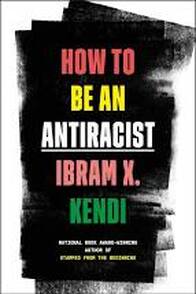 Chapter 3 - Power Race: A power construct of collected or merged differences that lives socially. "Race making is an essential ingredient in the making of racist ideas, the crust that holds the pie." pg. 40 - Kendi "This cause and effect -- a racist power creates racist policies out of raw self-interest; the racist policies necessitate racist ideas to justify them --lingers over the life of racism." pg. 42 - Kendi Self-Awareness. Race was constructed to set up a social hierarchy that would "justify" the actions of those who were profiting off the inhumane practices. The set up an economic, political and social systems that would direct the attention away from the policies and towards the people continued the inequities. As I apply this learning to my understanding of how these systems still persist and operate and how I am a beneficiary is how I can find my role in promoting antiracist policies and fight racism. 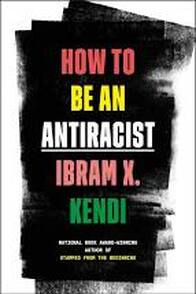 Chapter 2 - Dueling Consciousness Assimilationist: One who is expressing the racist idea that a racial group is culturally or behaviorally inferior and is supporting cultural or behavioral enrichment programs to develop that racial group. Segregationist: One who is expressing the racist idea that permanently inferior racial group can never be developed and is supporting policy that segregates away that racial group. Antiracist: One who is expressing the idea that racial groups are equals and none needs developing, and is supporting policy that reduces racial inequity. "One ever feels his two-ness, an American, a Negro; two souls, two thoughts, two unreconciled strivings; two warring ideals in one dark body, whose dogged strength alone keeps it from being torn asunder." W.E.B. Du Bois "Antiracist ideas are based in the truth that racial groups are equals in all the ways they are different, assimilationist ideas are rooted in the notion that certain racial groups are culturally or behaviorally inferior, and segregationist ideas spring from a belief in genetic racial distinction and fixed hierarchy." pg. 31. Self-Examination. In my position as an educator, do I support specific programs for different racial groups. Do I, unintentionally, hold segregationist and assimilationist attitudes because of the educational programs I am involved with? What local/state/federal policies do I need to better understand so that I know what impact it has had and will have in my community? Self-Awareness. My life would be an example of privilege in this country. White, 30s, Christian, able-bodied, college education, cisgender, straight, middle-upper middle class, employed, home-owner. I need to understand and check my positions on policies and how they will impact the people in my community. 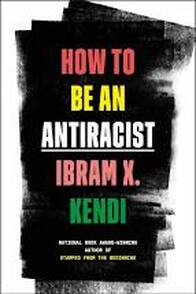 Chapter 1 - Definitions Racist: One who is supporting racist policy through their actions or inaction or expressing a racist idea. Antiracist: One who is supporting an antiracist policy through their actions or expressing an antiracist idea. Racial inequality is when two or more groups are not standing on equal footing. Racial equity is when two or more groups are standing on relatively equal footing. Racist policy is any measure that produces or sustains racial inequity between racial groups. Antiracist policy is any measure that produces and sustains racial equity between racial groups. Racist idea is any idea that suggests one racial group is inferior or superior to another racial group in any way. Antiracist idea is any idea that suggests the racial groups are equals in all their apparent differences -- there is nothing right or wrong with any racial group. Antiracism is a powerful collection of antiracist policies that lead to racial equity and are substantiated by antiracist ideas. "We can unknowingly strive to be a racist. We can knowingly strive to be an antiracist. Like fighting an addition, being an antiracist requires persistent self-awareness, constant self-criticism, and regular self-examination." - Ibram X. Kendi Self-Examination. What educational policies do I support? Who benefits and who loses from my decisions in the classroom? What political policies do I support? Do these policies only positively affect people who look like me or all people? What ideas do I have about the people who I come in contact with? About my students? Do my actions demonstrate antiracist ideas? Self-Awareness. Persistent. Constant. Regular. My learning will never be complete. This is my responsibility. I need to check myself. I need to listen. |
Mr. Dylan Wince
|

 RSS Feed
RSS Feed